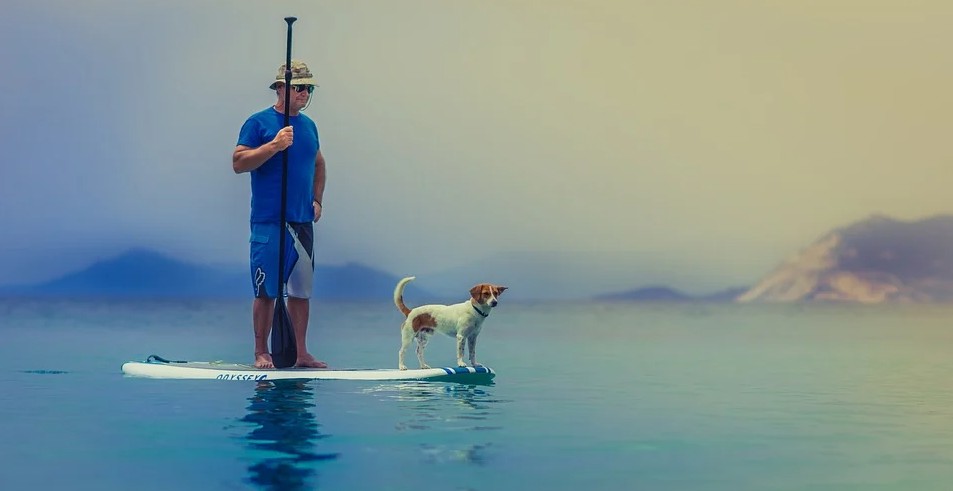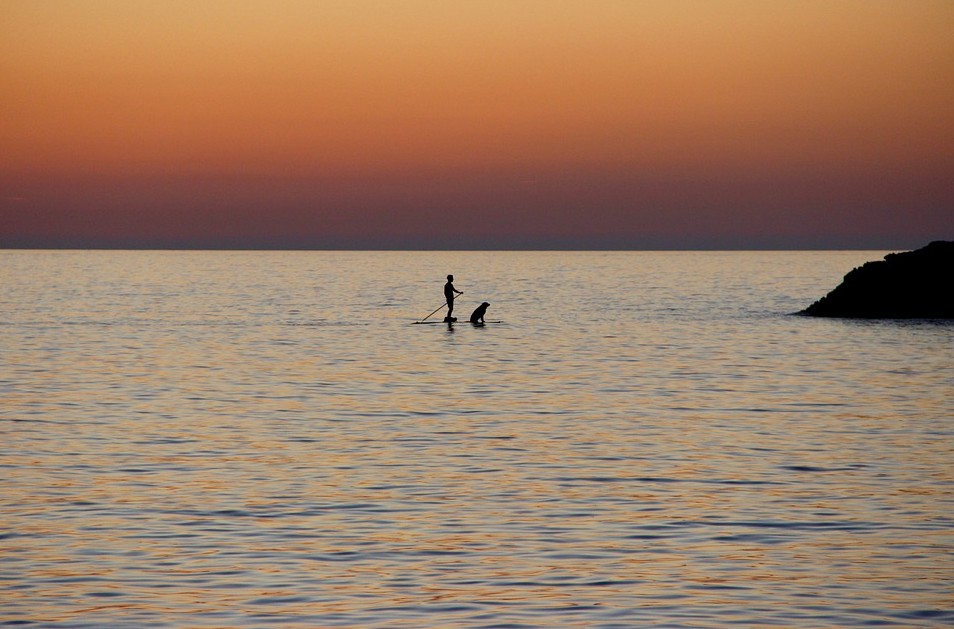There are limitless opportunities for your dog to participate in any recreational activities. Dogs can benefit from recreational activities by maintaining their physical and emotional wellness. All of our dogs require some form of regular exercise, and the majority of them will thrive with a little more stimulation.
According to a Forbes article, stand-up paddleboarding (SUP) is the world’s fastest growing watersport. It’s not only a simple activity, but it’s also one you can do with your dog. Paddleboarding with your dog is a fantastic way to enjoy nature while floating on the water with your pet. Taking your dog on a Stand-Up Paddleboard, on the other hand, is not always straightforward.
It would be best if you thoroughly prepare yourself before taking your pet out on the water. The dog feels at ease on the paddleboard and in a watery setting, which is not always the case. The more experienced and solid you are on the board, the easier it will be for your buddy.
Not sure where to begin with paddleboarding with your dog? Here are a few suggestions:
Get a board that is suitable for both you and your dog.
Boards are not one-size-fits-all. You must purchase the board which is most suited to you, your dog, and your goals. Inflatable boards, for example, are highly durable and include a rubber surface that is suitable for walking on. Hard-boards are more efficient and glide more smoothly over the water.
Note: Dogs prefer soft surfaces for paddleboards since they are less slippery and do not skid. Inflatable paddle boards provide a stable platform for the dog to stand on and are an excellent alternative to hard boards.
Assure that your dog is used to swimming.
Not all dogs are natural swimmers. Some breeds cannot even swim, and because of their body structure, they are easily overheated in the sun.
Bulldogs, Boxers Dachshunds, Pugs, and a few more breeds are examples. These breeds need you to purchase a dog life vest. Even if your dog can swim, it is always a good idea to put a life jacket on them before getting on a paddleboard. Choose a dog life jacket with a loop on it so you can easily pull the dog back onto the board. Following that, the dog must learn to swim.
Introduce the paddleboard into the home to familiarize the dog with it.
Which area of the house does the dog prefer to spend the most time in? For a week, leave the board on the floor. This allows your pet dog to become acquainted with the paddleboard and will undoubtedly become interested in the paddleboard. Depending on your dog’s personality, this step will give you an indication of how tough or simple it will be to get your dog on a paddleboard in the water.
After a week of acclimating your dog to your paddleboard, it’s time to train your dog.
Get your dog’s favorite dog treat and put it on your board. It’s critical to put the reward between where you’d typically stand and the nose of your board (since this is where your dog will stand or sit while you’re paddling). Telling your dog to get the treat should be accompanied by a command. For instance, “Jump up!”
Once they’ve hopped on your board and eaten the reward, offer them another to let them know they’ve done what you asked. Then, when you want your dog to step off your paddleboard, give another specific order (“Off!”). When this is done correctly, reward them with a goodie. Repeat this many times a day for a week. Continue to the following stage if you are successful with this.
If your dog is refusing to cooperate, make the procedure light-hearted and enjoyable rather than demanding. Take it slowly at first, and we guarantee your pet will be hopping on your paddleboard in no time.
Note: Before you begin training your dog to paddleboard, they should have basic obedience abilities.
It’s now time to look for your favorite paddleboard spot.
Take your dog to the water and practice all the above steps again. You can also try it out directly in shallow water. It may take a bit longer for your dog to complete this phase to feel at ease in the water.
When you and your dog feel comfortable, it’s time to get in the water! Don’t forget to put a life vest on your dog ahead of time. Keep your first outing brief and reward your dog with lots of praise and goodies!


